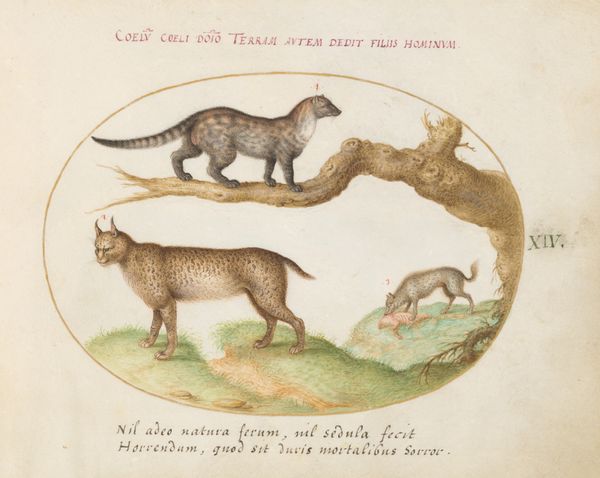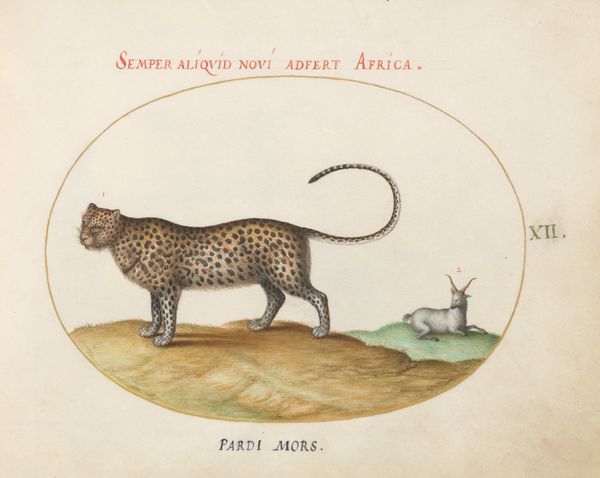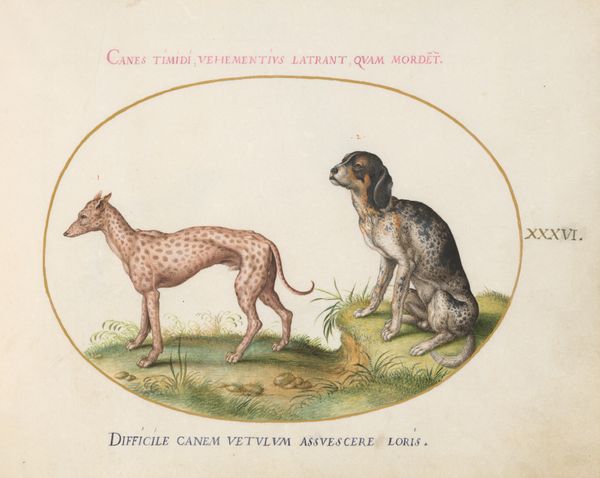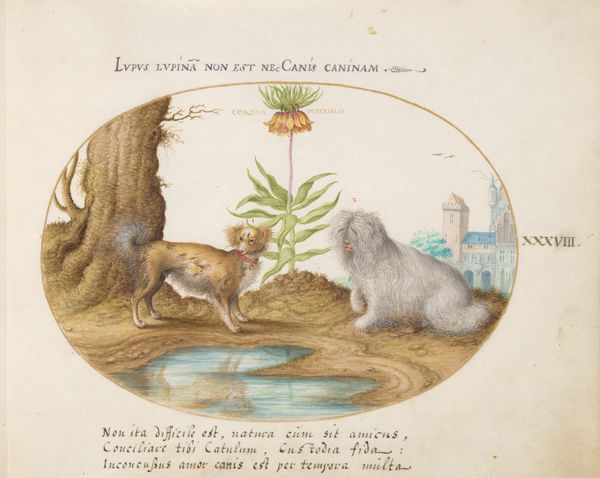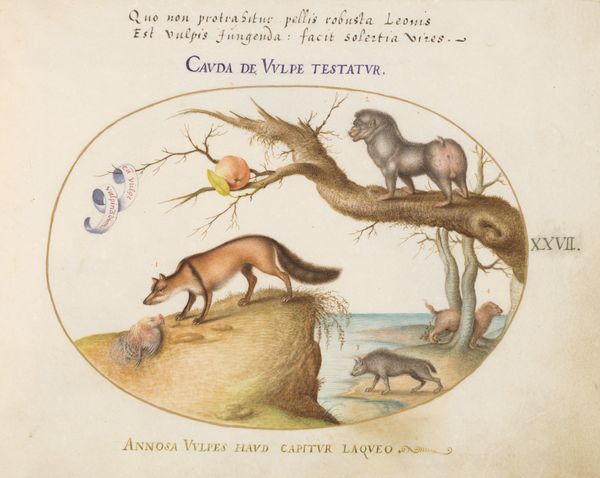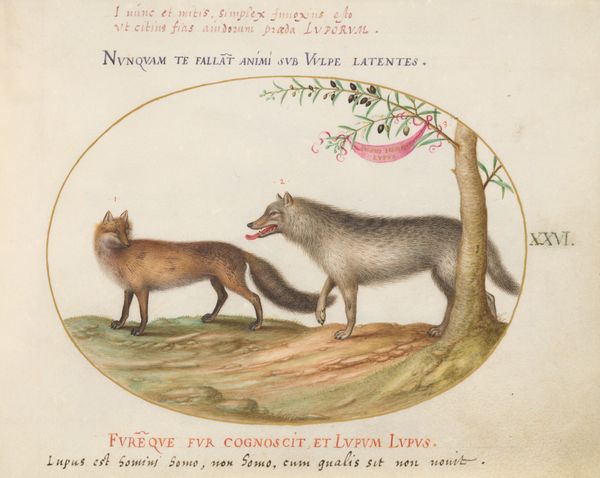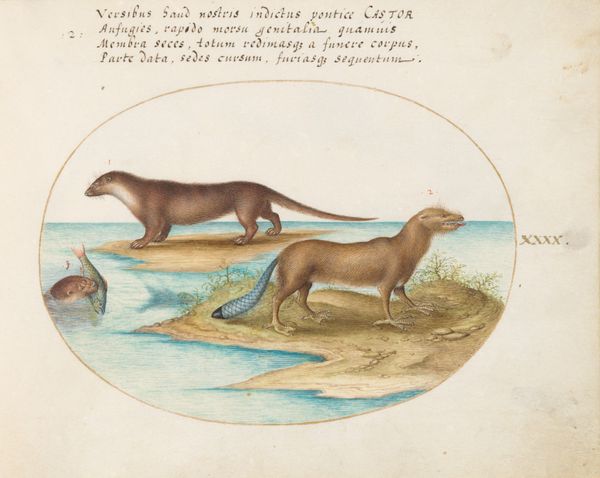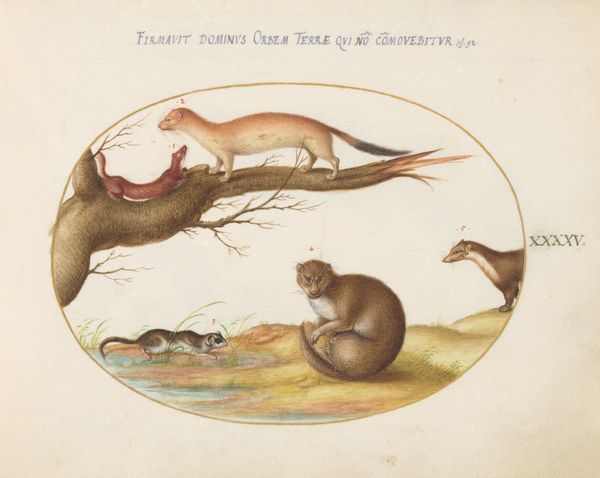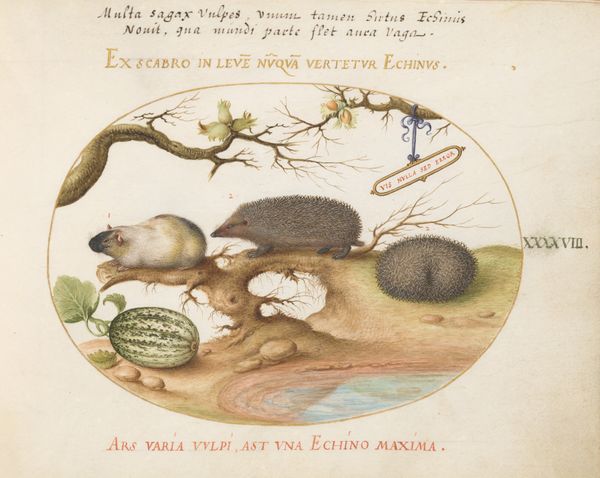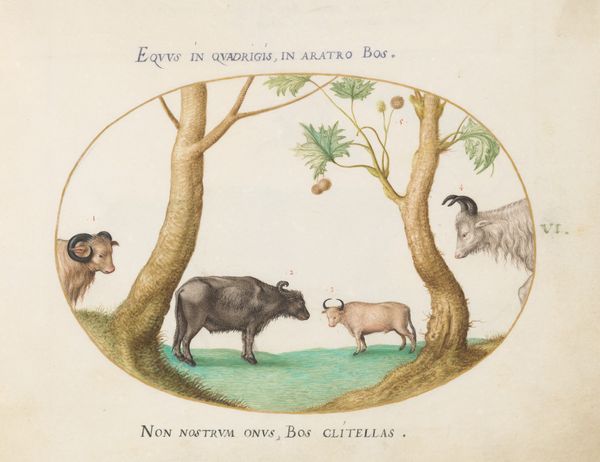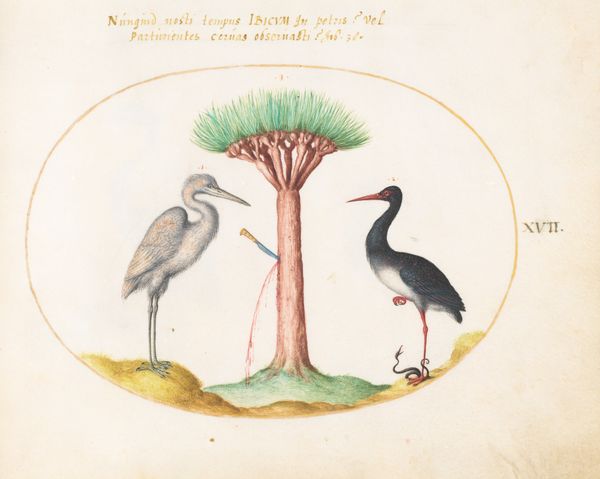
drawing, watercolor
#
drawing
#
animal
#
mannerism
#
11_renaissance
#
watercolor
#
coloured pencil
#
history-painting
#
miniature
Dimensions: page size (approximate): 14.3 x 18.4 cm (5 5/8 x 7 1/4 in.)
Copyright: National Gallery of Art: CC0 1.0
Editor: This is "Plate 13: A Tiger, a Lynx, and a Jaguar(?)" by Joris Hoefnagel, created around 1575-1580, using watercolor and drawing techniques. I find it curious how the animals are depicted, almost as if they are specimens rather than living beings. How do you interpret this work? Curator: That's a great observation. This piece, situated within the Mannerist style, comes at a time when Europeans were expanding their reach globally. Think about what it meant to categorize and display the natural world during this period of intense colonization and trade. Editor: So, it’s more than just pretty pictures of animals? Curator: Exactly. The act of depicting these creatures – tiger, lynx, and possible jaguar – isn't just about scientific accuracy. Consider the power dynamics at play. Europeans were cataloging the world, framing their knowledge as superior, effectively ‘owning’ these distant lands and their inhabitants, both human and animal, through representation. What does the Latin text accompanying the image tell you about this appropriation of knowledge and resources? Editor: The text mentions tigers and lions. Perhaps it reflects an attempt to classify these exotic animals within a known European framework? Curator: Precisely! It shows the desire to understand, but through a Eurocentric lens. Furthermore, consider how the “miniature” theme links to exclusivity. These works were commissioned and enjoyed by the elites. How does the act of collecting and possessing such images contribute to the construction of identity? Editor: So it was a symbol of power? Collecting knowledge was collecting power? Curator: In a sense, yes. It showcases a worldview, reinforces a sense of dominance, and underlines who gets to define “reality.” And who gets excluded or misrepresented. Editor: This makes me think differently about seemingly simple nature illustrations. Thanks! Curator: Indeed, by situating this piece in its historical context, we uncover how art is always enmeshed in broader social and political narratives.
Comments
No comments
Be the first to comment and join the conversation on the ultimate creative platform.
